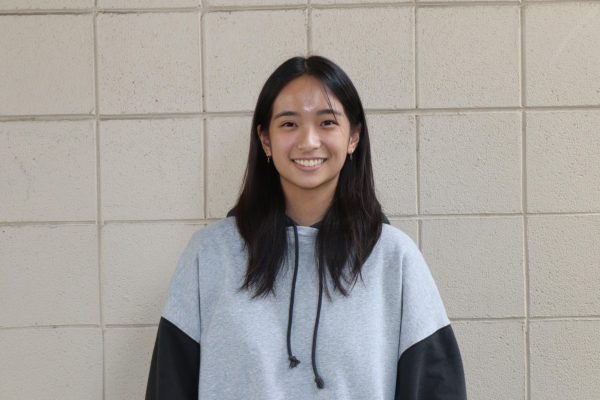While Asian Americans make up 6.3% of the U.S. population, only 2.2% of active student-athletes in the National Collegiate Athletics Association (NCAA) are Asian. This underrepresentation, combined with few major Asian American collegiate superstars, has resulted in the depiction that Asian athletes are “weak, fragile, and biologically ‘unsuited’ to modern sports.”
The perpetuation of the model minority myth has also exacerbated stereotypes that Asian Americans only excel in examination rooms. In the college application process, Asian Americans have historically had higher GPAs, standardized test scores and extracurricular involvement, showcasing the emphasis Asian households place on academics.
This mindset is also seen in the Saratoga community, according to sophomore Oliver Su, who said many Asian student-athletes face high pressure to focus more on their academics than sports.
“There are Asian students who care about grades, who have parents that are strict on them about grades while playing sports,” Su said. “Their parents can be really against them playing sports.”
Su said he felt pressured by his parents, who discouraged him from playing football. One major factor was his parents’ experiences: While Su has many teammates whose parents grew up playing sports, his parents never had that same experience, having spent most of their childhood in China or Taiwan. Because of this, his parents didn’t consider sports as an extracurricular to be taken seriously — at least, nowhere near the commitment they wanted him to dedicate toward academic performance.
By maintaining a high academic performance throughout high school, he was able to convince his parents to allow him to continue playing football.
Pro sports lack role models
The lack of Asian representation in sports can be discouraging. Su said there are very few professional Asian athletes in football he can look up to.
Defying all odds, there have been a few Asian American athletes who have succeeded in their respective sports, including Jeremy Lin (who is Taiwanese) in basketball, Tiger Woods (who is Afro-Asian) in golf and Kristi Yamaguchi (who is Japanese-American) in figure skating. Additionally, the Olympics feature many Asian gold-medal athletes in certain sports, such as Lü Xiaojun in weightlifting and Quan Hongchan in diving. This demonstrates it is not the genetic or racial makeup that determines the Asian makeup in sports, but rather the stigma that surrounds sports.
One of the largest Asian American stars, former NBA player Jeremy Lin has spoken about the blatant racism he has received throughout his career in interviews and on-court. When entering competitive basketball, he described insults directed at his eyes and other aspects of his culture, like Chinese takeout. One infamous dig at Lin was when an ESPN article referred to him as the “Chink in the Armor,” using one of the slurs toward Asian Americans.
Though he has few role models to look up to, Su said he continued playing because it equipped him with the mental fitness to endure a stressful environment. He also hopes more students will learn to embrace the environment that football teaches such as teamwork and perseverance.
Rising representation
Even with all this negative stigma toward sports, there are large differences in the racial makeup of different sports. According to the NCAA, gymnastics, volleyball, swimming and tennis have historically higher numbers of Asian American representation, with others, such as basketball and football, having significantly lower percentages at 0.3% and 0.4% respectively.
Asian NCAA participation is also rising: Athlete numbers have almost doubled from 6,859 in 2012 to 11,326 in 2023, highlighting the increased participation in sports alongside the ebbing of stereotypes in sports. With this increase came more professional athletes — for example Purdue Boilermakers center Zach Edey, whose mother was Chinese, was named Big Ten Player of the Year and National Player of the Year in 2023. As of March 14, Edey is ranked as the No. 1 in men’s basketball.
This trend can also be attributed to the support multi-generational Asian parents are providing their children with, such as training facilities, practice equipment and moral support. Unlike many immigrant parents, who were “hyper-selected” for academics out of the enormous populations of their home countries, second-generation Asians tend to have a more open view toward athletics and non-academic activities.
Instead of buying into the stereotype that Asian Americans aren’t capable of doing sports, aspiring Asian athletes find themselves navigating cultural, societal and familial obstacles.
“My parents are not keen on me playing — ‘you’ve got to focus on your academics. You can’t be you can’t be doing football,’” Su said. “It’s like an uphill battle. You gotta talk it out with them.”

































